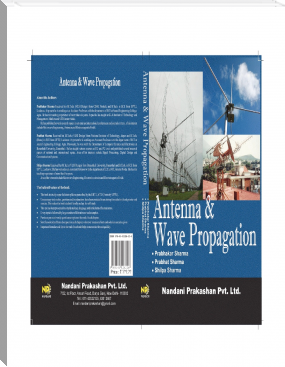Technology of World War II by Kevin Ramsey (hardest books to read TXT) 📖

- Author: Kevin Ramsey
Book online «Technology of World War II by Kevin Ramsey (hardest books to read TXT) 📖». Author Kevin Ramsey

World War II was a war that created an incredible amount of new technology. Only a quarter century earlier many of the common tehcnologies used for warfare didn't exist as the great war, World War I, came to an end. Technology in that short time evolved to provide new and deadly ways to conquer, kill and dominate! This short book will introduce several catagories of technological advances to help you identify some direction for a multimedia narrative to be presented at the conclusion of our world war II unit.
Categories of TechnologyThere are five categories that will be discussed throughout this book. These categories can be broken down into three themes; land, sea, and air.
Technology Categories:
Aircraft: Fighters, Bombers, Troop transport, Surveillance Warships: Cruisers, Battleship, Destroyer, Aircraft Carrier, PT Boats, Submarines Land Vehicles: Troop Transport, Supply, Tanks, Rail Car, Motorcycle, Jeep Personal Use: Helmet, Personal Weapon; knife, rifle, pistol, Ruck-sack, Entrenching Tool, C Rations *Home front: Metal-Rubber-Food Drives, Rationing, Production Lines, New Innovations in Transport and Production
Each category will be in introduction form and will lack some detail. This is due to the fact that there are books and books devoted to one small aspect of each category available elsewhere.
*The term Home front is used here to represent what was happening in American only. Home front could be used to identify any cultural location around the world but American will be the focus for this exercise.
Aircraft

Here is a short definition of each type of aircraft selected for use in this project. For more detailed information click here to see what is available on the web.
Fighter: These planes consisted on one or two man crews, were small, fast and carried limited amounts of fuel and ammunition. Fighter pilots were usually assigned to escort bombers while protecting the larger planes from enemy attack.
Bombers: These planes were larger and needed a crew of 4-10 men. Bombers carried large amounts of payload (bombs) that were used to eliminate selected targets of the enemy. Of the large variety, each was unique and specific for the job that was needed. Usually built with two engines they could have up to four along with an arsenal of small caliber weapons to defend from enemy attack.
Troop Transport: These planes usually were light weight, small, easy to navigate and had little to know offensive or defensive capability. One model was a glider type so relied on stealth to insert its crew. (this was a one way trip-type aircraft)
Surveillance: These aircraft were developed towards the end of the war. They were created to fly at high altitudes to stay away from surface to air defenses. They had a crew of one or two, little to no weaponry and high tech cameras.
Warships
Warships come in all sizes and shapes. These ships were literally large communities that floated on the water. Aircraft carriers, the largest of them all, contain gyms, mini malls, and movie theaters that would raise the moral of the crew while at sea for months at a time.
Cruisers: This ship is a relatively fast warship larger than a destroyer and less heavily armed than a battleship.
Battleship: This ship was a heavy warship built mostly in the late 19th and early 20th centuries, with extensive armor and large-caliber guns. Battleships are no longer in production because of the advancement in new technologies.
Destroyer: This is a small, fast warship, especially one equipped for a defensive role against submarines and aircraft.
Aircraft Carrier: An aircraft carrier is a large warship equipped to serve as a base for aircraft that can take off from and land on its deck.
PT Boat: This was a small motorboat equipped with torpedoes. It could go where larger boats were not able to go and use its weaponry to sink larger boats.
Submarine: The original name was a U-boat (underwater boat). This vehicle is a warship with a streamlined hull designed to operate completely submerged in the sea for long periods, equipped with an internal store of air, a periscope and typically armed with torpedoes and/or missiles.
These ships usually traveled together in what was called a convoy. Smaller ships were held to the outside to protect the larger ships in the middle.
Land Assault Vehicles

Land vehicles are commonly known as Tanks. Tank was the secret code name given to their development back in World War I and it just stuck. There are many classifications of "Tank" which can be researched but for the time being, this section will look at many types of land use vehicles.
Troop Transport: This is just what it says it is. Armored transports were used to move around during enemy fire. Troops were protected within by heavy armored plates.
Supply: An army travels on its stomach. Wheeled and track vehicles were used to transport supplies to areas that were in need. Many times these would be 2.5 or 5 ton dump trucks that had racks used for people or supplies in the dump bed.
Tanks: This vehicle is a heavy armored fighting vehicle carrying guns and moving on a continuous articulated metal track.
Rail Car: Railroads were used to move large amounts of troops, civilians, supplies and weapons all across Europe. Germany even went as far as to place large caliber guns on railcars. These were not as effective as they would have liked.
Motorcycles: Motorcycles were used to move quickly over rough terrain. One or two people could carry messages or be stealthier and go unnoticed. Bikes could also be deployed by aircraft as means to move around behind enemy lines for "secret" missions.
Jeeps: The military jeep was the brainchild of the Chrysler Corporation. Here is a 10 min. autobiography of the jeep. Check it out.
Personal Safety and Use
Every American G.I. sent to Europe was issued a standard assortment of instruments that would be used for any possible situation. This was termed standard issue. Helmets, knives, bags, canteens, side arms and a variety of other things helped the average solider live to see another day while battling for freedom.
Helmet: Helmets saved lives by protecting the head from bullets, shrapnel, and other items that could cause death.
Weapons: Soldiers were issued a knife (bayonet), an M1 rifle, ammunition, and sometimes a pistol or side arm. These were used for tactical use and protection. They could also be used as tools in some cases.
Rucksack: This is basically a backpack that contained many items of standard issue or mission essential materials. There is additional information about the rucksack in this primary source story.
Entrenching Tools: The E-tools was the soldiers best friend. This multipurpose tools was basically a foldable shovel. Besides digging a trench, soldiers could use them as hammers, climbing claws or weapons.
C Rations: Food is very important while battling the enemy. Soldiers used C rations which were meals prepared and canned to eat quickly. I have heard that they were not very tasty but would allow a guy not to starve to death.
Home front
The home front was a term given to everyday life for those that were left behind during the war effort. Since most of the men were in the Pacific and Europe, women and minorities stepped in to keep production at an all time high. Children were in charge of scrap drives all across America while those men that
 The desire to acquire knowledge about the surrounding world and human society is quite natural and understandable for a person. Life is so developed that an uneducated person will never occupy a high position in any field. Humanity in its mass, and each person individually, develops objectively, regardless of certain life circumstances and obstacles, but with different intensity. The speed of development depends on the quality of training.
The desire to acquire knowledge about the surrounding world and human society is quite natural and understandable for a person. Life is so developed that an uneducated person will never occupy a high position in any field. Humanity in its mass, and each person individually, develops objectively, regardless of certain life circumstances and obstacles, but with different intensity. The speed of development depends on the quality of training.




Comments (0)